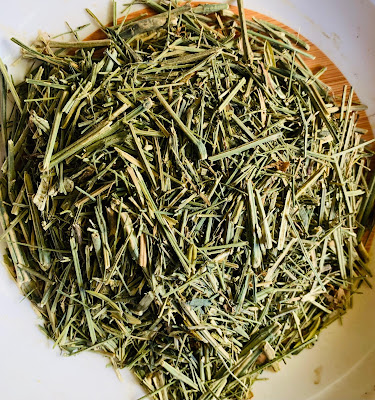Swertia Chirata: An Overview
Introduction
Swertia chirata, commonly known as Chirata or Indian Gentian, is a medicinal herb widely recognized in traditional Ayurvedic and Unani medicine for its bitter taste and therapeutic properties. Belonging to the Gentianaceae family, this annual or biennial herbaceous plant thrives in the temperate regions of the Himalayas, including India, Nepal, and Bhutan. Swertia chirata is highly valued for its various health benefits, including its role in treating fever, liver disorders, skin diseases, and digestive issues. Its bioactive compounds, such as xanthones, flavonoids, and secoiridoid glycosides, contribute to its pharmacological activities, making it a crucial component in herbal medicine.

Botanical Name:
Swertia chirata Buch. & Ham.
Family:
Gentianaceae
Arabic Name:
Zakr al Qassari, Qasb al-Zarirah
Urdu Name:
Chiraitah, Povai, Karayito, Chirata
English Name:
Chirata, Chiretta
Parts Used:
Flower and above-ground parts.
Temperament:
Hot + dry
Order:
2nd order.
Geographical Source:
Swertia chirata plant is native of India, Jammu Kashmir, Himalayan region and generally grow in mountains region of North India.
Organoleptic evaluation:
Appearance: Swertia chirata is a herbaceous plant that grows upto 3 feet tall,with lance-shaped leaves and small,yellowish or white flowers.
Odour: bitter and slightly sweet.
Taste: bitter, astringent.
Texture: The leaves and stems of the plant are slightly hairy and have a soft, delicate texture.
Color: Leaves and stems are green,flowers are yellowish or white.
Pharmacological Actions / Functions:
Swertia chirata possesses several pharmacological properties. It is antiseptic, diuretic, febrifuge, stomachic, anthelmintic, laxative, alterative (blood purifier), hypnotic, aphrodisiac, and emmenagogue. It excites appetite, reduces hyperacidity, and removes biliousness.
Specific Action:
Chirata is particularly noted for its alterative properties, being antiperiodic and a blood purifier, making it effective in treating malarial fevers associated with dyspepsia.
Chemical Constituents:
Swertia chirata contains swertianin, Swerchirin, Swertiamarin, Sweroside, Gentiopicrin, Mangiferin, Amaroswerin, Amarogentin, Bellidifolin, Gentiopicroside are the active constituents of this medicinal plant.
Mode of action:
1-Antidiabetic activity:
Swertia chirata contain active chemical swertiamarin may have antidiabetic effects which could help in managing blood sugar levels.Chiratin also inhibits alpha- amylase, an enzyme that breaks down starch into simple sugars, thereby reducing glucose production. It stimulates the pancreas to release insulin, improve insulin secretion and sensitivity.
2-Neuroprotection activity:
Amarogentin, the chemical constituent of swertia chirata has been shown to have neuroprotection effects against oxidative stress and inflammation. It may also act on the cerebellum, which is involved in motor coordination and learning to protect against neurodegeneration.
Amarogentin inhibits the acetylcholinesterase ( AChE),an enzyme that breaks down the neurotransmitter acetylcholine, which is involved in memory and learning.
Medicinal Uses:
- Chirata is esteemed for its stomachic, tonic, febrifuge, and antidiarrhoeal virtues, similar to those ascribed to gentian. Experts generally believe that the bitterness of chirata correlates with its efficacy—the less bitter the variety, the less effective it is therapeutically. Sweet varieties, lacking bitterness, are considered to have negligible therapeutic activity.
- Hakims regard chirata as a potent blood purifier, making it effective as an infusion for treating conditions like syphilis, gonorrhoea, itching, scabies, inflammations, and ulcers of the skin, along with other cutaneous disorders. It is stomachic and is prescribed for flatulence, indigestion, and diarrhoea. It also aids in convalescence following such ailments. Both decoctions and infusions of chirata are effective in treating chronic and seasonal fevers when combined with other appropriate drugs. For inflammations, chirata can be applied locally or taken internally. Notably, its potential is diminished or lost when heated, hence infusions are preferred over decoctions.
- As a household remedy, chirata is used for calculous affections, to promote delivery, and as a poultice for paralyzed limbs and rheumatic swellings.
Compound Preparations:
Roghan Kalan
Arq Murakkab Musaffi Khun
Ma’jun Juzam
Jawarish Jalinus
Jawarish Zar’uni Ambari Ba Nuskha Kalan
Roghan Suranjan
Dosage:
5 to 7 grams.
Corrigent:
Pimpinella anisum Linn. Gum of Pistacia mutica Fish & Mey or Pistacia terebinthus var. mutica Aitch. (Kabli Mastagi).
Tenedium:
Cicer lens/Lens esculenta Moench. Syn. for Lens culinaris Medic (Masur) Fumaria indica (Haussk.) Pugslay. (Shahtara).
Side effects:
Excessive use of chirata can be harmful to the lower back.
Prescription:
For Diabetes:
Swertia chirata (Chirata) 10g
Azadirachta indica (magaz neem) 10g
Momordica charantia (Karala) 10g
Holarrhena pubescens (Ander jo talakh) 10g
Gymnema sylvestre (gurmar Boti) 10g
Mix all ingredients and make a powder then fill capsule.
1 capsule twice a day after meal
Conclusion:
Swertia chirata, commonly known as “chirata” or “chiretta,” is a medicinal plant widely used in traditional medicine, particularly in Ayurvedic and Unani systems.Swertia chirata holds promise for various health applications, further scientific research and clinical trials are necessary to fully understand its efficacy and safety. It is essential to consult healthcare professionals before using it for medicinal purposes, especially for those with underlying health conditions or those taking other medications.
